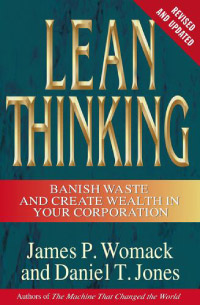Lean Manufacturing 2022
Ed Hill
Synchronous Solutions
 Lean Manufacturing is a systematic approach to identifying and eliminating waste through continuous improvement efforts.
Lean Manufacturing is a systematic approach to identifying and eliminating waste through continuous improvement efforts.
That’s the official definition. It is more precisely a set of process tools, each designed to accomplish a specific objective.
Lean Process Tools
- Value Stream Mapping – Plant/Flow Layout using a specific approach
- Kaizen – Continuous im- provement activities in a rapid “blitz” framework
- 5S – Workplace Organization and cleanliness. No one should ever need to look for anything.
- TPM – Equipment Preventative Maintenance. A disciplined approach to equipment maintenance.
- SMED – Setup / Changeover Reduction activities. Changeovers in 9 minutes or less.
- Kanban – Pull Mentality and inventory control
These tools, which can be implemented together or separately, form the concepts of the Lean Manufacturing System. Lean is actually a derivative of the Toyota Production System (TPS) developed by the Japanese auto manufacturer in the 1970’s. Lean Thinking, a book by Jim Womack, published in 2003, describes an Americanized version of the TPS process.
The Lean approach is focused on eliminating waste in all its forms. The approach uses a number of Japanese terms in its process. Waste (called muda in Japanese) is defined as “consuming resources without creating value.” Waste, in this context, would include idle inventory of any type and “ineffective resources,” meaning nonproductive equipment and/or people. The Lean system has identified seven categories of waste:
1 – Over production. The ultimate Lean system is “single piece flow” meaning that no inventory item is ever idle. One operational step is authorized to work only if the following operational step is about to be out of work.
2 – Waiting. Timing is also critical. A needed operational step should never wait on product to process. Any idle machine or person is undesirable unless it is not needed to avoid Over Production.
3 – Unnecessary transportation. Distances traveled are meticulously studied and minimized. Since there is little work-in-process in a Lean system, equipment is located so that a short “hand-off” can be achieved. A “Spaghetti Diagram” is used showing the travel of each unit of production throughout the manufacturing process.
4 – Process inefficiencies. Every process step is expected to meet and maintain a desired level of productivity relative to its standard, during the time its production is needed.
5 – Excessive inventory. As stated, idle inventory should not be allowed, except for the prescribed units in a Kanban box.
6 – Excessive motion. Every worker and process step is studied and engineered to be as quick and efficient as possible. Classic Industrial Engineering.
7 – Poor quality. Obviously, any part that must be remade or repaired is a waste.
Now, to explain the lean process tools:
Value Stream Mapping involves plotting all the activities necessary for a product family. The objective is to identify all non-value-added activities. The book describing this concept is Learning to See by John Shook, published in 1998.
Continuous Improvement.
Another Japanese term used is Kaizen, which is a focused, team approach designed to break the status quo by making immediate changes, i.e. continuous, incremental improvement of any activity to create more value with less muda (waste). A Kaizen event is typically completed within one week.
5S means a safe, clean, neat, arrangement of the workplace. “Everything has a place, and everything is in its place.” Always. The Five S’s originated as Japanese terms, but the English translations are:
Sort - Eliminate the unnecessary.
Straighten - A marked location for everything and every item always in its place.
Shine – Clean the workplace.
Standardize – Rules to maintain the clean and organized workplace condition.
Systematize – Self-discipline to sustain the desired conditions.
TPM – Total Productive Maintenance. This is a company-wide, team-based effort to improve overall equipment effectiveness and minimize down-time. TPM combines the practice of preventive maintenance with quality control and employee involvement to create a culture where operators develop ownership of their equipment. Employees are trained to listen to the machine for unusual sounds and to feel for unusual vibrations. Immediate reporting of these anomalies is encouraged.
SMED – Single Minute Exchange of Dies. This is a series of techniques designed to reduce complex setups/changeovers to less than 10 minutes:
- Separating internal and ex- ternal changeover activities.
- Converting internal to external.
- Streamlining all aspects of the changeover.
- Multiple iterations of the approach are used until the changeover can be accom- plished in less than 10 minutes.
Kanban. This is a “pull mentality” approach to inventory control. Essentially, a Kanban is a signal that indicates the need for product at downstream operations.
- Upstream operations are authorized to work only if the downstream operations they serve are in need of materials.
- A Kanban Box is a marked space between two work stations designed to store the work-in-process items. It should hold only a minimum number of units. When the Kanban Box is empty, the previous operation should produce to fill it again.
 Bump Back. This is a clever technique designed to maximize the velocity for processing a product. Each person in a Cell (Team) is trained to do all jobs. Upon completing the last process step, that person moves back in the flow and takes over for the previous person in the process, who moves back to take over for the next previous person, and so on until the first person in the process draws from the Raw Material supply to start a new unit. In this approach, the units of product never stop and the ultimate velocity of product completion can be accomplished.
Bump Back. This is a clever technique designed to maximize the velocity for processing a product. Each person in a Cell (Team) is trained to do all jobs. Upon completing the last process step, that person moves back in the flow and takes over for the previous person in the process, who moves back to take over for the next previous person, and so on until the first person in the process draws from the Raw Material supply to start a new unit. In this approach, the units of product never stop and the ultimate velocity of product completion can be accomplished.
Comparisons
There are many basic production strategies in use today. The following is a brief explanation of the most common ones:
Batch and Queue – This is the “old school” method that modern strategies have replaced. Batches of product are processed (rather than single-piece flow).
- Large lots to minimize set ups and maximize repetitiveness.
- Lots of work-in-process inventory is maintained to absorb “Murphy.”
- Product is through the system.
- Generally, lead times are long and often unreliable.
Lean – The focus is on eliminating waste in all its forms.
- Purist Lean is a single piece flow which is “pulled” through the system.
- Resource capacities are bal- anced with Takt time, which is the average time between the start of production of one unit and the start of produc- tion of the next unit.
- Particularly well suited for mass production products like auto- motive parts.
Demand Flow Technology (DFT) is a strategy for deploying business processes driven in response to customer demand.
- It is built on principles of demand pull, where the cus- tomer is the central signal to guide factory and office activity in the daily operation.
- Commonly used in mass pro- duction products like auto- motive parts.
Synchronous Flow (aka The Theory of Constraints). Thefundamental element of synchronous flow is that every business is a system, and every system is like a chain, the strength of which is determined only by the weakest link.
- The system’s constraint (weakest link) is identified and all other elements seek to maximize it.
- Protective Capacity is estab- lished to consume the inevitable variability in the system.
- Throughput ($T) is the “mea- sure of value added” by each order, and is used to create a finite schedule.
- Predetermined inventory time (Buffers) are strategically lo- cated to protect the schedule and are proactively managed continuously as the primary activity of Production Managers and Supervisors.
- Lean tools (Kaizen, 5S’s, TPM, SMED, etc.) are used as appropriate to support the principles of Synchronous Flow.
- Ideally suited for the custom manufacturing industry,z including countertops.
The Ultimate Solution
The ideal approach to process management is applying the science of Synchronous Flow as the umbrella controlling the daily management of the system with selected elements of Lean Manufacturing to address specific areas within the business. This combination of the two most popular business management systems has been proven to provide excellent results in applications in myriad industries around the world. Documented benefits include:
- Increased net profits and cash flow
- Reduced duration and more reliable Lead/Process Times
- Greater control of inventories
- Use of proven tools to prop- erly plan for various business scenarios
- Control and stability in daily operations
- Reduced costs of overtime
- Reduced employee turnover
- Reduced chaos in daily operations
- Improved quality of life for all employees
If you want more information on how to utilize Synchronous Flow and Lean Manufacturing, please contact the author directly.
Ed Hill is the owner of Synchronous Solutions. Visit his website www.SynchronousSolutions.com or call 704-560-1536 for more information.